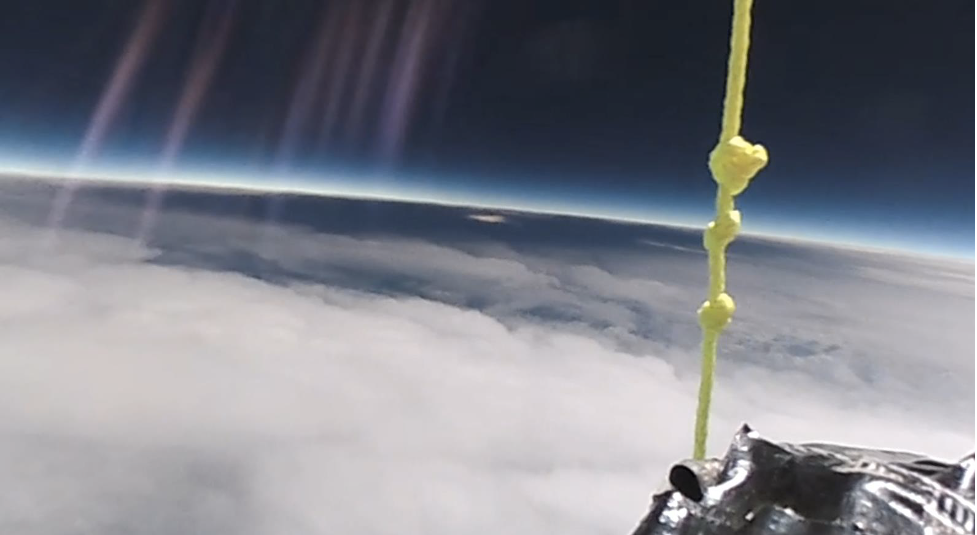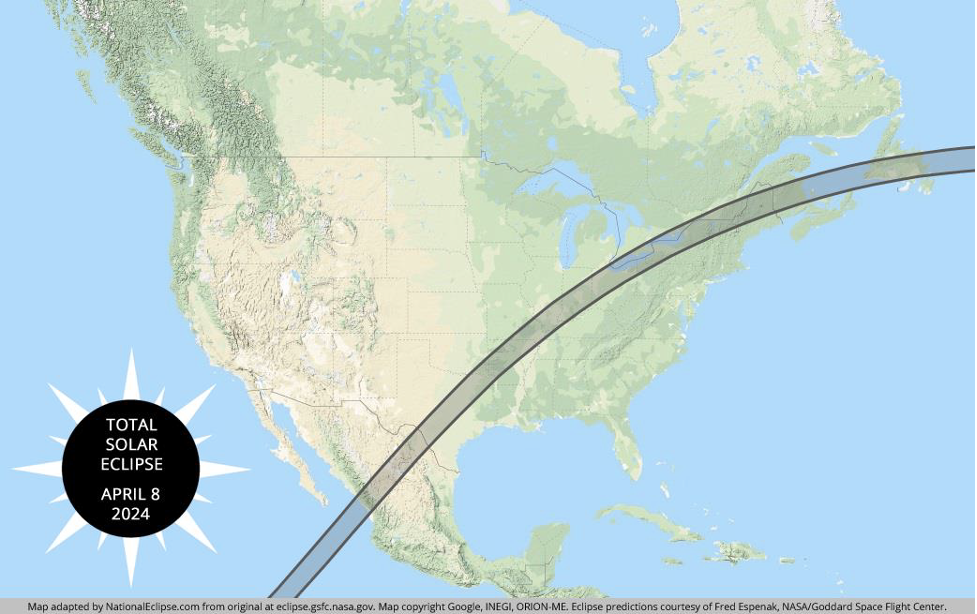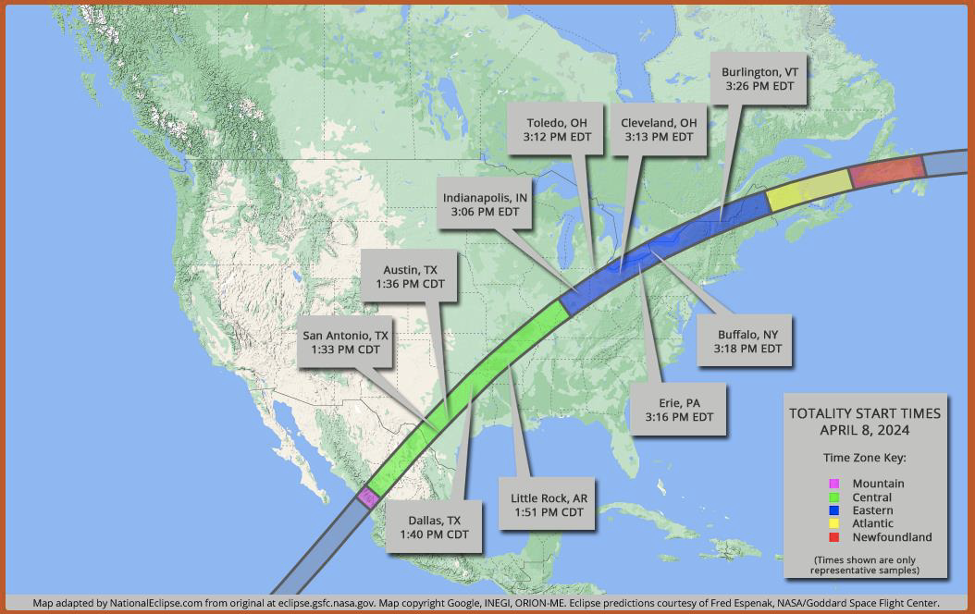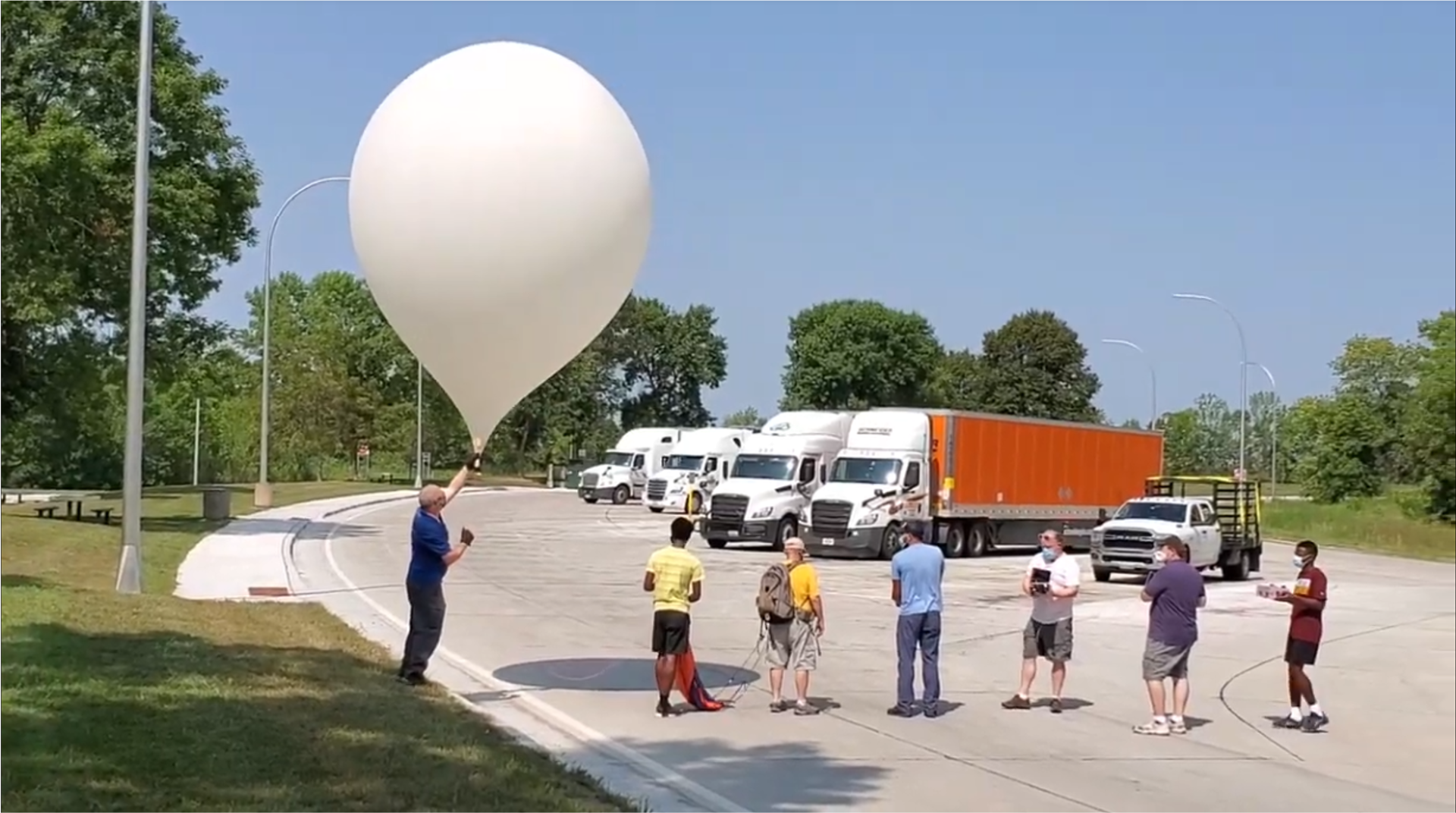Announcement of
NASA’s Minnesota Space Grant Consortium (MnSGC)
Solar Eclipse Ballooning Intercollegiate Challenge
(2022-2023 academic year)
[ Sign-ups closed on October 15, 2022. ]
NEW: Informational video (17 minutes long)

The Challenge
Propose, then build and test, a stratospheric spacecraft (AKA a “payload”) to study aspect(s) of a solar eclipse, to be test-flown by the U of MN’s ballooning team into the stratosphere (above MN) one year in advance – on April 8, 2023 (rain (or snow!) or shine)!
Top Prize
The winning payload will be carried on a MnSGC stratospheric balloon flight into the path of totality during an actual total solar eclipse on April 8, 2024.
Note: Members of the winning team (on their own dime) may accompany the MnSGC/U of MN Ballooning Team to help launch and recover their eclipse payload and experience the total solar eclipse (from the ground, of course) in 2024. Location along the ground track TBD – possibly near Indianapolis, Indiana.
Map below from NationalEclipse.com.

Team Composition
Sign up now (or certainly no later than Oct. 15, 2022) by writing to mnsgc@umn.edu, then attend the afternoon training on Oct. 1 (see below) and participate in the first team videocon in late October. Teams need to engage 3 students, minimum (with at least some gender and/or racial/ethnic diversity), as well as a faculty/adult adviser. (Note: 5 or 6 students might be a more-appropriate team size.) Each team proposes and builds one payload. Schools with more than 6 interested students may divide into multiple teams (that could share an adviser), each of which would propose a unique payload. However, we will prioritize payloads from different schools over multiple payloads from a single school, if we happen to receive more proposals than we can fly.
Training
Kick-off training for this challenge will take place at the U of MN –Twin Cities from 1 to 4 p.m. on Saturday, October 1, 2022. In-person attendance strongly encouraged (though the session will be recorded (but not streamed)). There will be mandatory monthly team videocons from October 2022 through April 2023, to discuss team progress with the challenge organizers.
Written reports
(1) Design Review (due mid-December 2022) explaining what you plan to build, why it would be of interest to fly on a stratospheric balloon mission during a total solar eclipse, and what it will look like and be made of and, most importantly, what it will weigh –there will be limits –to earn a spot (i.e. “to be manifested”) for the “mock-eclipse” flight day in April 2023.
(2) Flight Readiness Review (due mid-March 2023) explaining what you have finished building, how well it functions (on the ground), and what testing has been done to prepare it for stratospheric conditions.
(3) Post-Flight Performance Review (due late-April 2023) discussing how your payload fared in flight, what data it collected and what that data means (and what such data might show during an actual eclipse), and what changes you might make prior to an actual eclipse flight (if selected).
Flight Plan on 4/8/2023:
The “Mock-Eclipse” Date
On the “mock-eclipse” date we will shift the actual eclipse path (see map below) to the northwest, to pass over the Twin Cities at 2:06 p.m. CDT (as opposed to over Indianapolis at 3:06 p.m. EST (2:06 p.m. CDT)).
We will then launch balloons, probably SW of the Twin Cities, in the early afternoon, timed to intercept the “mock-eclipse” at altitude. Participants are encouraged, though not required, to attend and help with the launch, tracking, and recovery of the eclipse payloads.
Map below from NationalEclipse.com.

Minnesota Space Grant Consortium
www.mnspacegrant.org
Questions, or want to sign up?
Write to mnsgc@umn.edu
